Rhombus
A rhombus is a type of quadrilateral which has the following properties:
- Equal Sides: All four sides of a rhombus are of equal length. This means that the opposite sides are parallel and congruent.
- Opposite Angles: The opposite angles of a rhombus are equal in measure.
- Diagonals: The diagonals of a rhombus bisect each other at right angles and are of equal length.
Formulas and Properties:
Here are some important formulas and properties related to rhombuses:
- Perimeter: The perimeter of a rhombus is given by P = 4 * side length.
- Area: The area of a rhombus can be calculated using the formula A = (diagonal 1 * diagonal 2) / 2.
- Diagonal Length: The length of the diagonals can be found using the Pythagorean theorem: d = sqrt((side length)^2 + (side length)^2).
Example Problems:
Let's solve some example problems to understand the concepts better:
- Problem 1: Find the area of a rhombus with side length 6 cm and diagonals 8 cm and 10 cm.
- Problem 2: If the perimeter of a rhombus is 24 cm, find the length of each side.
Solution: Using the formula A = (diagonal 1 * diagonal 2) / 2, we get A = (8 * 10) / 2 = 40 square cm.
Solution: Given P = 4 * side length, we have 24 = 4 * side length. So, side length = 24 / 4 = 6 cm.
Practice Questions:
Now, it's time to practice some questions to reinforce your understanding. Try solving the following problems:
- Find the perimeter of a rhombus with side length 12 cm.
- If the diagonals of a rhombus are 16 cm and 30 cm, find the area of the rhombus.
Hope this study guide helps you understand the concept of rhombus better. Good luck with your practice questions!
.◂Math Worksheets and Study Guides First Grade. Ordinals
Study Guide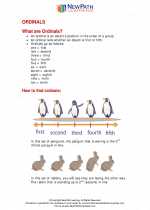 Ordinals
Ordinals  Activity Lesson
Activity Lesson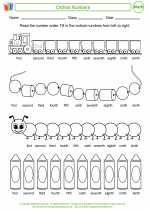 Ordinal Numbers
Ordinal Numbers  Worksheet/Answer key
Worksheet/Answer key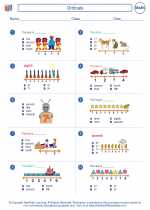 Ordinals
Ordinals  Worksheet/Answer key
Worksheet/Answer key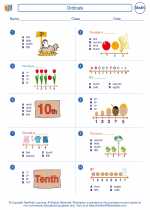 Ordinals
Ordinals  Worksheet/Answer key
Worksheet/Answer key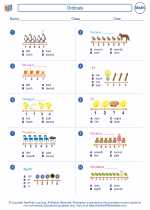 Ordinals
Ordinals  Vocabulary/Answer key
Vocabulary/Answer key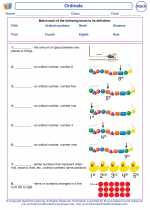 Ordinals
Ordinals  Vocabulary/Answer key
Vocabulary/Answer key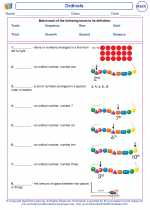 Ordinals
Ordinals 

 Activity Lesson
Activity Lesson
 Worksheet/Answer key
Worksheet/Answer key
 Worksheet/Answer key
Worksheet/Answer key
 Worksheet/Answer key
Worksheet/Answer key
 Vocabulary/Answer key
Vocabulary/Answer key
 Vocabulary/Answer key
Vocabulary/Answer key

The resources above cover the following skills:
Number and Operations (NCTM)
Understand numbers, ways of representing numbers, relationships among numbers, and number systems.
Develop understanding of the relative position and magnitude of whole numbers and of ordinal and cardinal numbers and their connections.